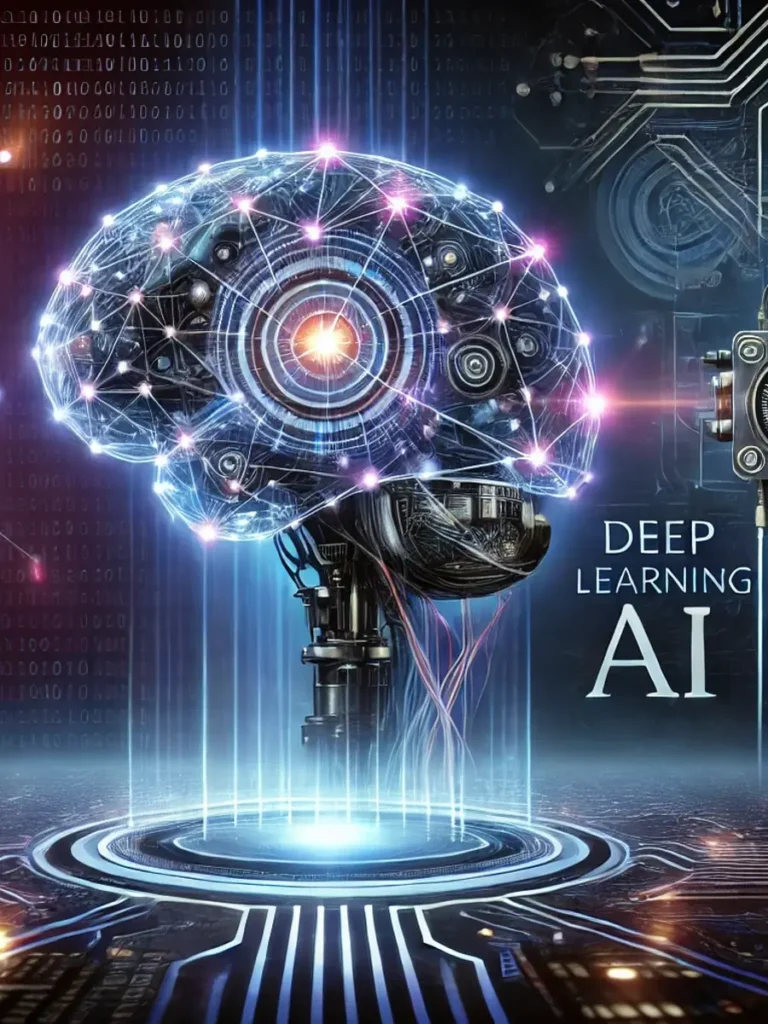
Introduction
In the rapidly evolving world of artificial intelligence (AI), one of the most transformative and powerful subsets is deep learning AI. It is revolutionizing industries by enabling machines to learn, adapt, and perform complex tasks with incredible accuracy.
What is Deep Learning AI?
It is a branch of machine learning that utilizes artificial neural networks to simulate human brain functions. Unlike traditional algorithms, it can analyze large datasets, recognize patterns, and make decisions without human intervention.
It is particularly effective in handling unstructured data, such as images, speech, and text. This ability has fueled its application in various fields, from self-driving cars to medical diagnostics. With it, computers can now perform tasks that were once thought to be exclusively human.
How Deep Learning AI Works?
It operates through multi-layered neural networks, often referred to as deep neural networks (DNNs). These networks are designed to mimic the human brain, processing data through interconnected nodes (neurons) structured in layers.
Key Components of Deep Learning AI
- Artificial Neural Networks (ANNs) – Modeled after the human brain, ANNs are made up of neurons that pass information through layers, forming the core of it.
- Activation Functions – These determine whether a neuron should be activated, ensuring only useful data moves forward in the models.
- Backpropagation & Gradient Descent – These techniques help fine-tune the models by adjusting weights to improve accuracy.
- Training & Learning – The models require massive datasets and powerful computing to train and make predictions, continuously improving performance over time.
Applications
1. Healthcare and Medical Diagnosis
It is revolutionizing the healthcare industry by enabling early disease detection, personalized medicine, and medical imaging analysis. AI-powered systems can analyze MRI scans, X-rays, and pathology slides to identify diseases like cancer and Alzheimer’s with high accuracy.
2. Autonomous Vehicles
Companies like Tesla, Waymo, and Nvidia are leveraging it to develop self-driving cars. AI-powered vision systems analyze road conditions, detect obstacles, and make real-time driving decisions, significantly enhancing road safety.
3. Natural Language Processing (NLP) & Chatbots
It has enabled AI to understand and generate human language. Popular applications include:
- Chatbots (ChatGPT, Google Bard) that offer intelligent conversations powered by deep learning AI.
- Voice assistants (Siri, Alexa, Google Assistant) that understand speech using this technology.
- Automated translation services like Google Translate leverage deep learning AI.
4. Financial Services
Banks and financial institutions use it for fraud detection, risk management, and algorithmic trading. AI models analyze vast amounts of financial transactions to identify suspicious activities in real time, reducing fraudulent transactions.
5. Content Creation and Personalization
It is transforming content creation by generating AI-driven articles, music, and even artwork. Platforms like Netflix, YouTube, and Spotify use these algorithms to recommend content based on user preferences.
6. Industrial and Manufacturing Automation
AI-powered robotics and automation have improved efficiency, quality control, and predictive maintenance in manufacturing industries. These models detect product defects and optimize assembly line operations, reducing waste and improving productivity.
Advantages
✔ High Accuracy – These models achieve state-of-the-art accuracy in tasks like image recognition, speech processing, and medical diagnostics.
✔ Eliminates Manual Feature Engineering – Unlike traditional machine learning, it learns features automatically.
✔ Handles Complex Data Types – It works effectively with images, text, videos, and audio.
✔ Scalability – It can process massive datasets using high-performance computing.
Challenges
🔴 Data Dependency – It requires large labelled datasets to train effectively.
🔴 Computational Power – It needs expensive GPUs and TPUs to process data efficiently.
🔴 Lack of Interpretability – Its models act as black boxes, making it difficult to understand decision-making processes.
The Future of Deep Learning AI
The future of deep learning AI is exciting and full of possibilities. Emerging trends include:
- Explainable AI (XAI) – Making its decision-making more transparent.
- Quantum AI – Combining quantum computing with it for faster processing.
- AI in Drug Discovery – Accelerating pharmaceutical research with deep learning AI-powered drug testing.
- Advanced Robotics – Creating AI-powered humanoid robots with its intelligence.
It is a game-changer that is transforming industries and reshaping our future. As research and development continue, we can expect even more groundbreaking applications to redefine how humans interact with technology.


There is definately a lot to find out about this subject. I like all the points you made
I learned something new today.
Thanks for simplifying a difficult subject.
One of the best reads I’ve had this week.
very informative articles or reviews at this time.
Such a valuable resource.
Truly a masterpiece of content.
Clear, concise, and effective.
The examples really helped.
I learned something new today.
Super insightful and fresh perspective.